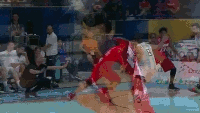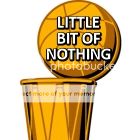So lets start with this. Hedgehogs: The NBA’s Best Hedging Screen Defenders
Teams like the Rockets, Warriors, and 76ers have begun to employ a switch-heavy defensive scheme when defending screens. While it may be true that these aggressive, switching defenses are the future of the NBA, there are a number of teams and players that have been very successful at defending screens while hedging at a high rate rather than switching.
Note: All stats assume a minimum of 1,000 total screens defended.
PATRICK PATTERSON: 5.1 POINTS ALLOWED PER 100 SCREENS, 45.5 HEDGE%
Among all qualifying players, Patterson has, by far, the highest Hedge%, a full 6.8 percentage points ahead of second place. Patterson’s 5.1 Points Allowed per 100 Screens puts him fourth best in the league this season. While an average defender in the aggregate (0.99 Points Allowed per Shot), Patrick is quick on his feet and does a great job cutting off players attempting to drive to the rim.
AMIR JOHNSON: 5.1 POINTS ALLOWED PER 100 SCREENS, 31.0 HEDGE%
Patrick’s frontcourt teammate in Toronto reveals a teamwide commitment to a hedge-centered screen defense. Dwane Casey has a roster full of nimble frontcourt players with above-average lateral quickness. The Raptors led the league in team Hedge% at 23.4 percent. Amir is, similarly to Patterson, an average overall defender that excels at limiting guards from turning corners, forcing them into subpar shots.
LUIS SCOLA: 6.0 POINTS ALLOWED PER 100 SCREENS, 35.2 HEDGE%
The Pacers hedge on 12.6 percent of their shots, making Scola stick out on their roster (Luis hedges nearly 15 percent more than the next man on the roster, Chris Copeland). Scola lacks the ability to switch without creating mismatches on the floor and struggles when simply dropping zone because he doesn’t have the athleticism or the lateral quickness necessary to protect the rim. This makes hedging hard a necessary defensive strategy for the veteran Argentinian. On such plays, Scola can surprise quicker guards with his aggressiveness and his quick hands as they try to turn the corner.
Committing to hedging can decrease an individual player’s number of points allowed on any particular screen but can be detrimental to overall team defense if the rest of the roster does not rotate effectively when the ball gets reversed. Toronto, for example, is a below-average defensive squad even though they have two frontcourt players that rank highly in screen defense. It may be the case that the emerging positionless NBA will make switching on screens a more popular and effective strategy, but the players above demonstrate that successful screening can be done by hedging hard and preventing the initial drive from guards.
So with presumably Scola getting some burn at PF/C and PP getting an increased workload, we could see alot of the same as AJ/PP duo of years past. And then theres DMC who could get alot of burn at the 3-4.

Among the 240 players who defended at least 100 on-ball screens in 2014-2015, Carroll ranked 33rd in Hedge% (24.18). His tendency to hedge often forced opposing ball handlers into hesitating momentarily before reacting, which was invaluable for an Atlanta team that finished the year with the league’s seventh-best defense. Having the quickness and defensive awareness to recover following a hedge allowed Carroll to lock down an opponent’s top perimeter threat and stifle on-ball action all at once. Carroll’s hedging abilities fit exactly with the Raptors’ defensive scheme, as they led the entire league last season in team Hedge% (26.03).
Theres alot more good stuff about the DMC signing using Vantage stats, but id rather keep it to the D principles in general. So even though its been said we are going to accentuate JVs, do you really think they have done so in a way to help? I mean DMCs weakness is his Keep-in-front rate and Contest rate, so that doesnt bode well if were trying to stop initial penetration right?
I guess im just skeptical how this is all going to work, what say you??


















